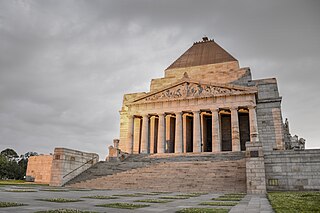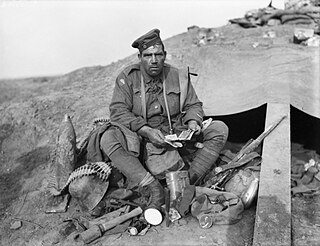
The United States Department of State (DOS), or simply the State Department, is an executive department of the U.S. federal government responsible for the country's foreign policy and relations. Equivalent to the ministry of foreign affairs of other nations, its primary duties are advising the U.S. president on international relations, administering diplomatic missions, negotiating international treaties and agreements, and representing the U.S. at the United Nations. The department is headquartered in the Harry S Truman Building, a few blocks from the White House, in the Foggy Bottom neighborhood of Washington, D.C.; "Foggy Bottom" is thus sometimes used as a metonym.

The United States Immigration and Naturalization Service (INS) was an agency of the U.S. Department of Labor from 1933 to 1940 and the U.S. Department of Justice from 1940 to 2003.
Special Branch is a label customarily used to identify units responsible for matters of national security and intelligence in British, Commonwealth, Irish, and other police forces. A Special Branch unit acquires and develops intelligence, usually of a political or sensitive nature, and conducts investigations to protect the State from perceived threats of subversion, particularly terrorism and other extremist political activity.
The Venona project was a United States counterintelligence program initiated during World War II by the United States Army's Signal Intelligence Service and later absorbed by the National Security Agency (NSA), that ran from February 1, 1943, until October 1, 1980. It was intended to decrypt messages transmitted by the intelligence agencies of the Soviet Union. Initiated when the Soviet Union was an ally of the US, the program continued during the Cold War, when the Soviet Union was considered an enemy.

Coonabarabran is a town in Warrumbungle Shire that sits on the divide between the Central West and North West Slopes regions of New South Wales, Australia. At the 2021 census, the town had a population of 2,387,and as of 2021, the population of Coonabarabran and its surrounding area is 3,477. Local and district residents refer to the town as 'Coona'. Coonabarabran is the gateway to the Warrumbungle National Park, Siding Spring Observatory and the Pilliga Forest.

The Shrine of Remembrance is a war memorial in Melbourne, Victoria, Australia, located in Kings Domain on St Kilda Road. It was built to honour the men and women of Victoria who served in World War I, but now functions as a memorial to all Australians who have served in any war. It is a site of annual observances for Anzac Day and Remembrance Day, and is one of the largest war memorials in Australia.

The Ministry of Information (MOI), headed by the Minister of Information, was a United Kingdom government department created briefly at the end of the First World War and again during the Second World War. Located in Senate House at the University of London during the 1940s, it was the central government department responsible for publicity and propaganda. The MOI was dissolved in March 1946, with its residual functions passing to the Central Office of Information (COI); which was itself dissolved in December 2011 due to the reforming of the organisation of government communications.

Reginald Walter Saunders, MBE was the first Aboriginal Australian to be commissioned as an officer in the Australian Army. He came from a military family, his forebears having served in the Boer War and the First World War. Enlisting as a soldier in 1940, he saw action during the Second World War in North Africa, Greece and Crete, before being commissioned as a lieutenant and serving as a platoon commander in New Guinea during 1944–1945. His younger brother Harry also joined the Army, and was killed in 1942 during the Kokoda Track campaign.
The Australian Information Service (AIS) was one of a series of federal government organisations created to promote the image of Australia, in existence between 1940 and 1996.

Australia in the War of 1939–1945 is a 22-volume official history series covering Australian involvement in the Second World War. The series was published by the Australian War Memorial between 1952 and 1977, most of the volumes being edited by Gavin Long, who also wrote three volumes and the summary volume The Six Year War.

Ceduna Airport is a public airport in Ceduna, South Australia. The airport, which is owned by the District Council of Ceduna is located adjacent to the Eyre Highway, approximately 2 km (1.2 mi) east of the town. It is the westernmost airport that receives regular passenger service in South Australia and is critical infrastructure for the surrounding remote and sparsely populated region. In addition to scheduled flights to Adelaide, the airport caters to charters in support of the mining industry, general aviation, the Royal Flying Doctor Service, aerial firefighting and occasional military use.

Film Australia was a company established by the Government of Australia to produce films about Australia in 1973. Its predecessors were the Cinema and Photographic Branch (1913–38), the Australian National Film Board, and the Commonwealth Film Unit (1956–72). Film Australia became Film Australia Limited in 1988 and was consolidated into Screen Australia in 2008.

Rock Island Light is a lighthouse on Rock Island in the Saint Lawrence River in Jefferson County, New York, United States. The island is owned by the New York State Office of Parks, Recreation and Historic Preservation and operated as Rock Island Lighthouse State Park.

Leonard George Siffleet was an Australian commando of World War II. Born in Gunnedah, New South Wales, he joined the Second Australian Imperial Force in 1941, and by 1943 had reached the rank of sergeant. Posted to M Special Unit of the Services Reconnaissance Department, Siffleet was on a mission in Papua New Guinea when he and two Ambonese companions were captured by partisan tribesmen and handed over to the Japanese. All three men were interrogated, tortured and later beheaded. A photograph of Siffleet's impending execution became an enduring image of the war, and his identity was often confused with that of other servicemen who suffered a similar fate, in particular Flight Lieutenant Bill Newton.
The Department of Post-War Reconstruction was an Australian Government department responsible for planning and coordinating Australia's transition to a peacetime economy after World War II. The department was established in December 1942 and dissolved in March 1950.

John Linton Treloar, OBE, commonly referred to during his life as J. L. Treloar, was an Australian archivist and the second director of the Australian War Memorial (AWM). During World War I he served in several staff roles and later headed the First Australian Imperial Force's (AIF) record-keeping unit. From 1920 Treloar played an important role in establishing the AWM as its director. He headed an Australian Government department during the first years of World War II, and spent the remainder of the war in charge of the Australian military's history section. Treloar returned to the AWM in 1946, and continued as its director until his death.

John "Barney" Hines (1878–1958) was a British-born Australian soldier of World War I, known for his prowess at taking items from German soldiers. Hines was the subject of a famous photo taken by Frank Hurley that depicted him surrounded by German military equipment and money he had looted during the Battle of Polygon Wood in September 1917. This image is among the best-known Australian photographs of the war.

The United Nations Memorial Cemetery in Korea, located at Tanggok in the Nam District, City of Busan, Republic of Korea, is a burial ground for United Nations Command (UNC) casualties of the Korean War. It contains 2,300 graves and is the only United Nations cemetery in the world. Laid out over 14 hectares, the graves are set out in 22 sites designated by the nationalities of the buried servicemembers.
The Kenya News Agency (KNA) is a government-run national news agency created in 1963. Its headquarter is in Nairobi and it is run by the Department of Information, Ministry of Information Communication and Technology. News reports are created by KNA reporters in 72 county and sub-county offices and disseminated from the National Editorial Desk in Nairobi to subscribers made up of news media companies in Kenya and around the world. Their services also include Electronic/TV News Unit, Mobile Cinema and Photographic Services.